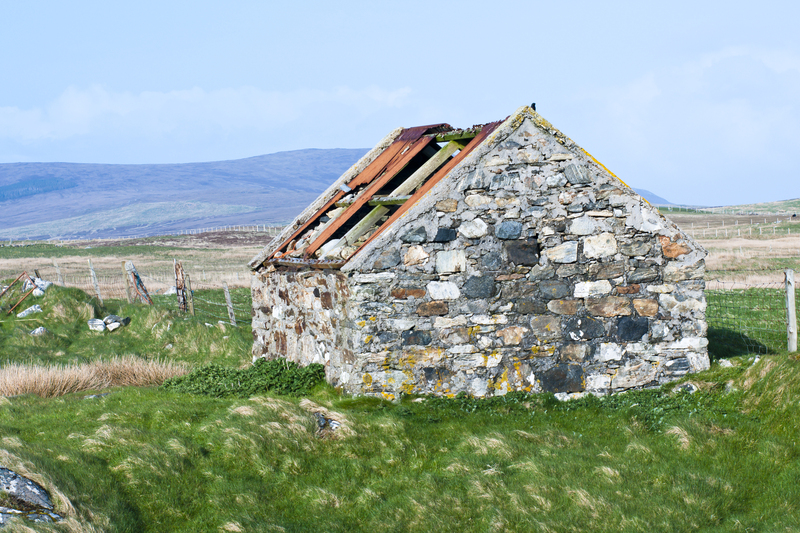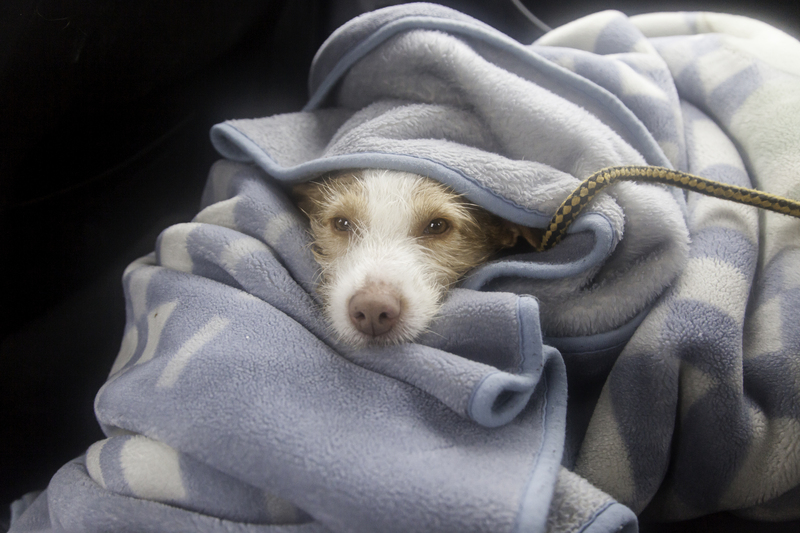Mastering the Art of Freezer Preservation During Downtime
Posted on 11/06/2025
Mastering the Art of Freezer Preservation During Downtime
Freezers are indispensable appliances in homes and businesses alike, enabling us to store food for extended periods without worrying about spoilage. However, what happens when unforeseen downtime strikes--be it due to power outages, equipment malfunction, or planned maintenance? The answer lies in mastering the art of freezer preservation during downtime. In this comprehensive guide, we dive into every facet of the process, ensuring your freezer's contents remain safe, edible, and high-quality even when your appliance goes offline.
Understanding Freezer Downtime: Causes and Risks
Before we explore preventive measures and best practices, it's essential to understand what freezer downtime is and why it poses a risk.
Common Causes of Freezer Downtime
- Power Outages: Sudden loss of electricity is the most prevalent cause of freezer malfunction.
- Equipment Failure: Mechanical or electronic faults can occur in the refrigeration system.
- Routine Maintenance: Regular cleaning and repairs require temporary shutdowns.
- Human Error: Leaving the freezer door ajar or accidentally unplugging it.
Key Risks During Freezer Downtime
- Food Spoilage: Perishable items are at risk of thawing, leading to bacterial growth.
- Financial Loss: Wasted inventory can mean significant monetary setbacks, especially for businesses.
- Cross Contamination: Spoiled items can leak onto other foods, resulting in contamination.
- Safety Hazards: Rancid food can pose health risks if unwittingly consumed.
Awareness of these potential issues makes mastering freezer preservation an invaluable skill for both households and commercial kitchen operators.

How Long Will a Freezer Stay Cold Without Power?
A frequently asked question during freezer downtime is how long you can count on your appliance to keep your food frozen. Typically:
- A full freezer can maintain safe temperatures for about 48 hours if unopened.
- A half-full freezer will last approximately 24 hours under the same conditions.
Note: These estimates assume the freezer door remains closed throughout the outage. Opening the door accelerates temperature rise and endangers your food's freshness.
Preemptive Strategies: Planning for Freezer Preservation Success
Organize and Inventory Your Freezer
- Group Foods by Type: Stack similar items together--meats, vegetables, bread--so you can quickly identify what needs attention first.
- Label and Date Packages: Mark all items for quick identification and rotation.
- Remove Excess Packaging: Strip away bulk packaging to save space and ensure cold air can circulate.
Invest in Freezer Thermometers
Installing a freezer thermometer is a simple yet powerful tool in freezer preservation during outages. Thermometers help you:
- Monitor the internal temperature hands-free.
- Make decisions based on real-time data rather than guesswork.
- Ensure the temperature never exceeds the safe threshold of 0?F (-18?C).
Stock Up on Ice Packs and Block Ice
Keeping your freezer full is an age-old tip for preserving cold air during downtime. Use:
- Reusable ice packs: Fill empty containers with water and freeze them for emergencies.
- Block ice: Slower to melt than ice cubes, blocks offer prolonged insulation.
- Frozen water bottles: These can fill gaps between items and help keep your freezer colder, longer.
Best Practices During Freezer Downtime
1. Keep the Freezer Door Closed
Avoid opening the freezer unnecessarily. Every time the door opens, warm air enters and speeds up the thawing process. If you must check the contents, plan to do so swiftly and deliberately.
2. Add Insulation
During an extended freezer outage, you can add extra insulation:
- Cover the freezer with heavy blankets, quilts, or sleeping bags.
- Do not cover air vents; allow for some airflow to prevent condensation and potential damage.
Extra insulation acts as a thermal barrier, helping to retain cold air and prolong the life of frozen goods.
3. Consolidate Contents
If you manage multiple freezers or have both a fridge and a freezer, consider consolidating items so that one stays as full as possible. A fuller freezer retains cold longer than one that's half empty.
- Stack items tightly to reduce air space.
- Place the most perishable foods in the coldest part (usually the bottom or rear).
4. Monitor Temperatures and Act Swiftly
Check your freezer thermometer periodically. If temperatures rise above 0?F (-18?C) but stay below 40?F (4?C), most foods are still safe. However, if foods have completely thawed and reached room temperature, it's best to dispose of perishables to avoid foodborne illnesses.
5. Utilize a Generator (If Available)
For prolonged outages, a backup generator can be a lifesaver. Use it sparingly to power your freezer, keeping the temperature within safe limits. Always follow manufacturer safety guidelines and run generators in well-ventilated areas.
6. Prioritize Recovery
Once power is restored or repairs are complete, check the contents, reorganize items, and resume normal operations. Discard anything with an unusual odor, appearance, or texture.
Assessing Food Safety After Freezer Downtime
Recognizing when food is safe to refreeze or eat is a critical aspect of mastering freezer preservation during downtime. Here are essential guidelines:
- If ice crystals remain: Refreezing is generally safe for most foods if they still contain ice crystals or are at refrigerator temperatures (below 40?F/4?C).
- If fully thawed but still cold (<40?F/4?C): Many foods can be refrozen or cooked and then refrozen, but with some loss in quality.
- If food reached above 40?F/4?C for more than two hours: Discard perishables, especially meat, poultry, fish, eggs, ice cream, and leftovers.
What Foods Are Safest to Refreeze?
- Unopened packages of fruit and bread products.
- Hard cheeses, butter, and margarine.
- Raw dough and some baked goods.
Meats and seafood should be handled with extra vigilance; when in doubt, throw it out!
Optimizing Freezer Preservation forBusinesses and Restaurants
Commercial establishments such as restaurants, cafes, and food retailers have unique challenges during freezer downtime. Here are some advanced freezer preservation strategies for businesses:
Implement a Food Safety Action Plan
- Designate staff responsibilities for emergency situations.
- Set up clear monitoring and reporting protocols.
- Keep a written inventory to track what needs priority attention.
Establish Partnerships for Emergency Cold Storage
- Arrange relationships with neighboring businesses or cold storage providers.
- Transport critical inventory to off-site freezers if downtime is expected to be prolonged.
Schedule Preventive Maintenance
- Regularly inspect and service equipment to catch potential issues early.
- Test backup power systems periodically to ensure reliability.
Staff Training and Communication
- Educate employees about freezer preservation protocols.
- Post clear signage regarding keeping doors closed and monitoring temperatures.
Proactive training and organization can mean the difference between saving or losing thousands of dollars' worth of inventory.
Advanced Tips for Mastering Freezer Preservation
Use Smart Technology
- Install WiFi-enabled temperature sensors for real-time monitoring and instant alerts via phone or email.
- Invest in smart plugs to remotely reboot or control appliance power.
Embrace Vacuum Sealing
Vacuum sealing food before freezing reduces air exposure, minimizes freezer burn, and can maintain quality even if slight thawing occurs during short downtimes.
Pre-Cook and Portion Meals
- Prepare meals in advance and portion them into meal-sized servings.
- Smaller packages refreeze more quickly and reduce waste if only some thawing occurs.
Plan Your Shopping Smartly
- During storm seasons or anticipated outages, buy only what you can use quickly.
- Build inventory gradually to minimize potential loss.

Frequently Asked Questions About Freezer Downtime and Preservation
Can I Refreeze Food After a Power Outage?
If the food contains ice crystals or has remained below 40?F, it is generally safe to refreeze--though you may lose some texture or quality. Discard any food that has warmed above 40?F for over two hours.
How Can I Tell if My Food Spoiled?
- Off smells, discoloration, mold, or slimy texture are sure signs of spoilage.
- When in doubt, err on the side of caution and throw it out.
What Foods Last the Longest in a Freezer During Downtime?
Foods high in water content, like fruits and baked goods, tend to last longer. Raw meats, fish, dairy, and leftovers are the first to spoil once thawed. Tightly packed, ice-enclosed items remain colder, longer.
Should I Use Dry Ice?
Dry ice is an excellent emergency solution but must be handled with care (insulate hands, ventilate the area, and never place directly on food). One pound of dry ice per cubic foot maintains safe temperatures for 24 hours.
Summary: Key Takeaways for Freezer Preservation During Downtime
- Preparation is crucial: Organize, label, and inventory your freezer in advance.
- React quickly: During downtime, keep the door closed and insulate the unit if possible.
- Monitor internal temperatures vigilantly and know your safe thresholds.
- Use backup solutions, such as generators or off-site storage, when feasible.
- When in doubt about food safety, err on the side of caution and discard questionable items.
Mastering the art of freezer preservation during downtime is both science and good sense. By applying these expert strategies, you can safeguard your precious frozen foods, minimize waste, and maintain peace of mind--whatever challenges come your way. Stay informed and prepared to elevate your food preservation skills, ensuring your freezer always serves you well--even when the unexpected happens!
